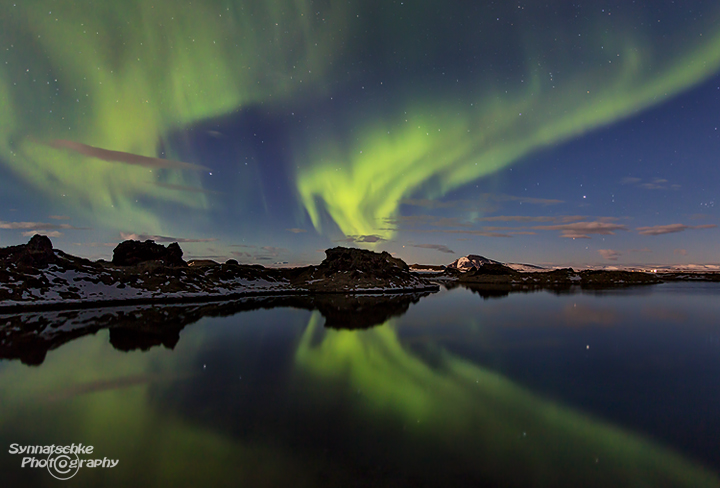
AURORA BOREALIS
In late summer, as soon as the nights get dark enough, we might start seeing beautiful Aurora Borealis displays in the Northern Hemisphere again. This year they began showing up already on August 20 and at many places in Iceland there were colorful lights dancing all across the clear skies during many consecutives nights of high activity (Kp=5!). More will for sure follow soon, since sunspot activity is supposed to be still pretty high this fall and winter.
We are looking forward to seeing/photographing northern lights again and we would like to wish you the best of luck as well while on a "aurora hunt"! Just keep in mind, that if the aurora isn't strong enough or if there is no visible moonlight, your eyes might be unable to detect colors. Under low light conditions the human eyes are color blind (scotopic vision) and the light thresholds for color perception is different from individual to individual. That means a weak aurora display might look just like "grey clouds" to most of us in a dark night without moonlight. Those long yearned for "vibrant colors" may only show up on your camera's sensor! On the other hand, a bright moon usually washes out the aurora and its colors.
That is one of the reasons we have some clear preferences when it comes to the lunar phase. We like to photograph the aurora either between "waxing crescent" (=1/4 moon) and the first quarter (=half moon) or or between the last quarter (1/2 moon) and "waning crescent" (1/4 moon). Moonlight - if not too strong - can be extremely helpful when shooting at night, also because it brightens up the otherwise rather black and structureless foreground. And as an additional bonus, it helps focussing and reducing the exposure time as well as the ISO.
This might be crucial, especially as soon as the large green aurora bow, that usually spans the northern horizon rather motionlessly, suddenly breaks apart and lights start moving at a pretty fast pace across the sky. If conditions are too dark then, you will have some trouble in shooting the aurora properly. High ISO settings are required to achieve beautiful green "curtains"; these settings prevents your from totally blurring northern lights. 8 seconds was just about the longest exposure that fitted the fast moving aurora at Lake Myvatn last year. And luckily there was enough moonlight to keep the ISO settings low as well.
Location: March 28, 2013, 2 A.M. at Lake Myvatn in Northeast Iceland, full moon (partially hidden behind some faint clouds)
Image data: 8 s at f/3.2, ISO 800 (manual settings); Canon EF 16-35mm 1:2.8 L II USM at 20 mm, Canon EOS 5D Mark III
Related Links: Our report on Northern Lights forecasts and more Aurora Borealis images from Iceland
